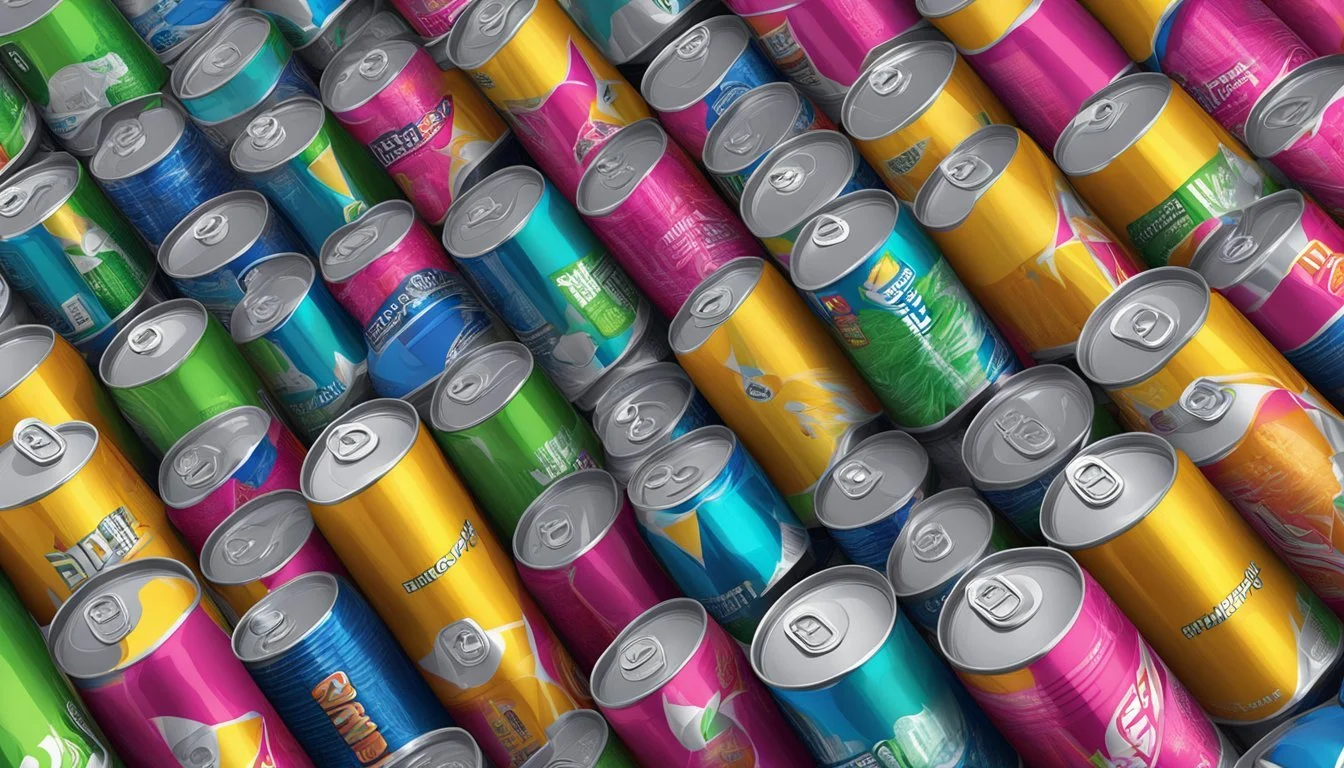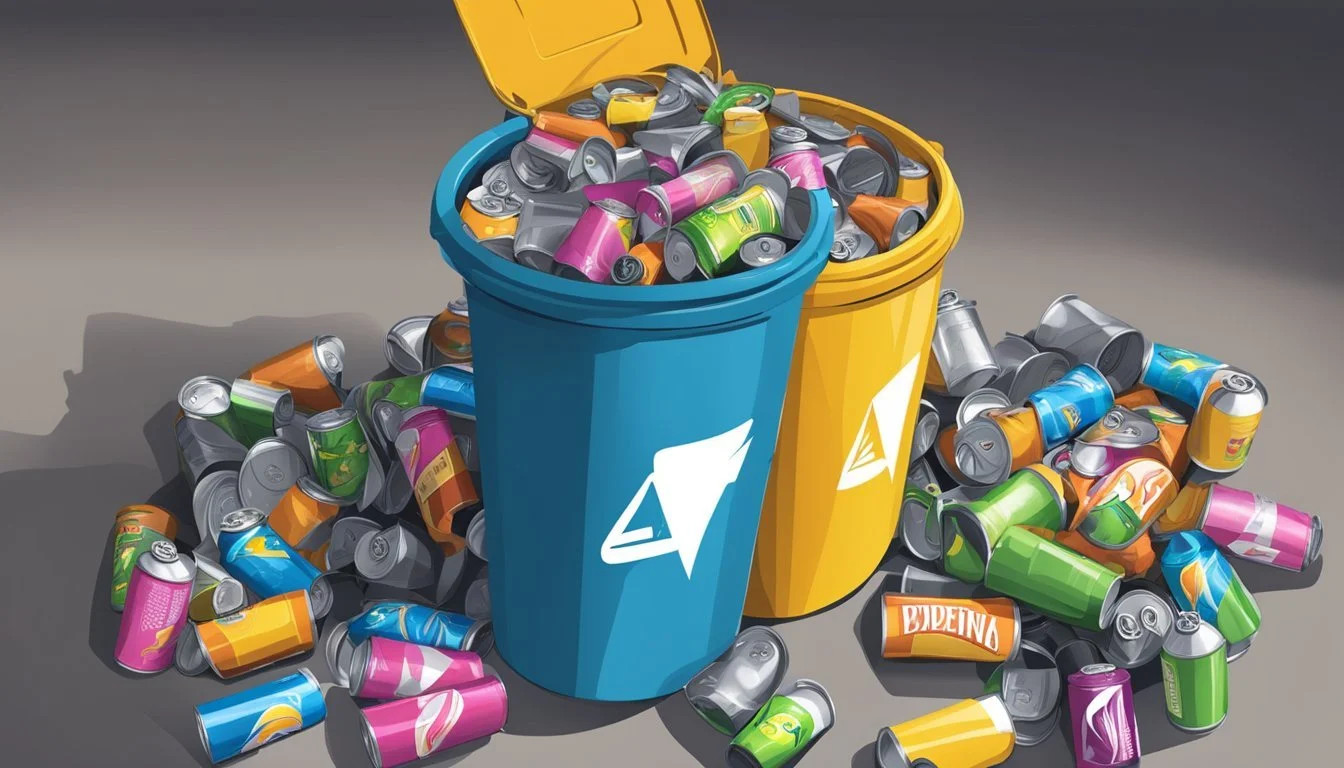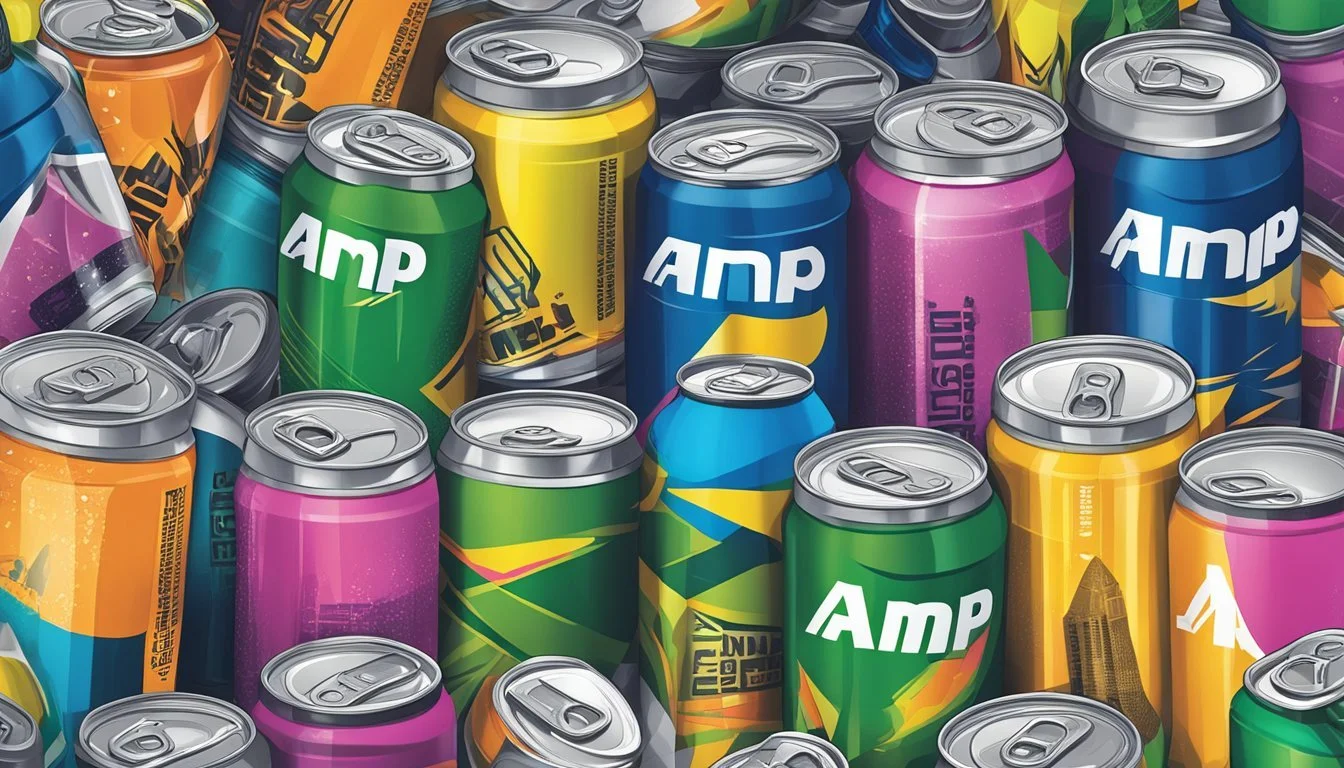How Many Cans of Amp Energy Drink Per Day Are Excessive
Limiting Your Intake for Health
Energy drinks have become a popular choice for a quick energy boost, and AMP is a familiar name in this market, known for its caffeine and sugar content. The common question for consumers is how many cans of AMP is safe to consume in a day. With each 16 fl. oz can of AMP containing 142 mg of caffeine and 58 grams of sugar, it's crucial to consider the impact of these ingredients on health.
The human body has varying tolerance levels for caffeine and sugar, and these levels are influenced by factors such as age, weight, and individual sensitivity. Health authorities typically suggest upper limits for caffeine intake and recommend moderate consumption of sugars to prevent adverse effects. Drinking too much AMP, or any energy drink, can lead to caffeine overdose and excessive sugar intake, which are associated with several health issues.
Understanding the balance between energy needs and the effects of overconsumption is key when deciding the number of cans one can safely drink. It is generally advised to limit AMP energy drink intake to minimize the risk of potential health problems. Reviewing current health guidelines and considering individual dietary needs is important when determining an appropriate daily amount.
Understanding Energy Drinks
Energy drinks are designed to increase energy and mental performance. This section delves into what these beverages usually contain and how their key components can affect one's daily intake and overall health.
Components of Energy Drinks
Energy drinks are typically a blend of caffeine, sugar, and other energy-boosting compounds such as taurine and various vitamins. They often contain artificial sweeteners and may include high-fructose corn syrup (HFCS) as a source of added sugar. The combination of these ingredients is intended to provide a quick burst of energy and increased alertness.
Caffeine Content in Amp Energy
Amp Energy Original: Contains approximately 142 mg of caffeine per 16 fl oz can.
Amp Energy Zero: Contains approximately 157 mg of caffeine per 16 fl oz can.
The caffeine level in Amp Energy drinks is significant when compared to a standard 8 oz cup of coffee, which typically has about 95 mg of caffeine. Individuals should monitor their caffeine intake to avoid exceeding the recommended limit.
Sugar and Artificial Sweeteners Impact
Amp Energy Original: Contains 58 grams of sugar per 16 fl oz can.
Amp Energy Zero: Uses artificial sweeteners to reduce calorie content.
The high sugar content in regular Amp Energy beverages can contribute to an intake well above the recommended daily limit for added sugars, which is 24 grams for women and 36 grams for men. Meanwhile, artificial sweeteners present in the zero-calorie versions can offer a sweet taste without the extra calories, but they should still be consumed in moderation as part of a balanced diet.
Health Considerations
When discussing the consumption of energy drinks such as Amp, it is important to consider not only the general guidelines for safe intake but also the potential health implications that can arise from overconsumption. This section will carefully examine the recommended limits, side effects, and special considerations for different groups within the population.
Safe Consumption Levels
For the average adult, the American Academy of Pediatrics suggests that moderate caffeine intake should not exceed 400 mg per day. One can of Amp Energy contains approximately 142 mg of caffeine. Therefore, adults should limit themselves to no more than two to three cans per day to remain under the safe threshold. It's important to note that individual caffeine tolerance may vary, and some people might experience negative symptoms even at lower doses.
Recommended limit for adults: ≤ 400 mg of caffeine/day
Approximate caffeine content per can of Amp: 142 mg
Suggested maximum cans per day for adults: 2-3 cans
Side Effects of Overconsumption
Exceeding the safe limits of caffeine can lead to several health issues. High consumption can cause a rapid increase in heart rate and high blood pressure, which are particularly concerning for individuals with heart conditions. The temporary surge in energy is often followed by a crash, and regular overconsumption may worsen this effect. Nutritionists also caution against the high added sugar content, which can exacerbate conditions like obesity and type 2 diabetes.
Key side effects include:
Increased heart rate
Elevated blood pressure
Blood sugar spikes
Nutritional imbalances
Potential for caffeine-related health complications
Special Populations and Energy Drinks
Certain groups such as children, pregnant women, and individuals with pre-existing health conditions should be especially cautious with energy drink intake. The American Academy of Pediatrics strongly advises against energy drink consumption for children and adolescents. Pregnant women should also limit caffeine intake to protect fetal development. People with conditions such as diabetes, heart-related issues, and high blood pressure ought to consult a healthcare provider to understand the potential risks associated with energy drink consumption.
Children and adolescents: No energy drinks recommended
Pregnant women: Limit caffeine to ≤ 200 mg/day
People with pre-existing health conditions: Consult with healthcare provider
Comparative Analysis
This section provides an insight into how Amp Energy drink stacks up against other popular energy beverages and coffee in terms of caffeine content, which is a crucial factor for adults monitoring their daily intake.
Amp Energy Versus Other Energy Drinks
Amp Energy drinks contain 142 mg of caffeine per 16 fl. oz can. When compared to other energy drinks, this caffeine level is moderate. For example:
Red Bull: An 8.4 fl. oz can has about 80 mg of caffeine.
Monster: A 16 fl. oz can offers roughly 160 mg of caffeine.
Rockstar: Similar to Monster, a 16 fl. oz can contains 160 mg of caffeine.
Celsius: A 12 fl. oz can has approximately 200 mg of caffeine.
Individuals should be wary of consuming multiple cans of any energy drink, as this could lead to excessive caffeine intake.
Amp Energy Versus Coffee
In comparison to coffee, the caffeine content in Amp Energy drinks may be slightly higher or lower depending on the coffee's strength and serving size. For instance:
Brewed Coffee: On average, 8 fl. oz of brewed coffee contains about 95 mg of caffeine.
Espresso: A single shot (approximately 1 fl. oz) contains about 63 mg of caffeine.
Green Tea: Exhibiting a milder effect, 8 fl. oz of green tea typically has around 28 mg of caffeine.
Adults often choose coffee or green tea as a less concentrated source of caffeine, which could provide a more gradual energy enhancement compared to the rapid boost energy drinks offer.
It is generally recommended that adults limit their caffeine intake to no more than 400 mg per day to avoid negative health effects. With energy drinks, it is easy to exceed this limit if one is not careful, considering other dietary sources of caffeine like soda, chocolate, or medication.
Usage Guidelines
In considering how many cans of AMP Energy should be consumed in a day, one must focus on the recommended serving sizes and the timing and consumption patterns to achieve desired benefits like increased alertness and physical performance without negative health impacts.
Recommended Serving Sizes
A standard serving of AMP Energy Drink is one 16 fl. oz can, which contains 142 mg of caffeine and 58 g of sugar. It is critical to limit consumption to avoid excessive caffeine and sugar intake that can lead to adverse health effects. The general guideline for caffeine intake is up to 400 mg per day for most healthy adults.
Children (under 18 years): Should avoid caffeine
Adults (18 years and older): Up to 2 servings of AMP per day (284 mg of caffeine)
Pregnant/Nursing Women: Consult a doctor but generally less than 200 mg of caffeine per day
Timing and Consumption Patterns
The timing of energy drink consumption can be as crucial as the serving size. Individuals should consider the following:
Morning or Early Afternoon: Best times to consume for an energy boost and to enhance mental alertness.
Late Afternoon/Evening: Consumption should be avoided to prevent sleep disruptions.
Pre-Exercise: Can be taken 30 minutes before physical activities to improve endurance and reaction time.
It is advisable to monitor one's own reaction to the drink, as sensitivity to caffeine varies. For those sensitive to caffeine, even a single serving may be too much.
Regulatory Perspective
The Federal Drug Administration (FDA) plays a pivotal role in the oversight of energy drinks, setting standards to ensure safety and inform consumers.
FDA Regulations on Energy Drinks
The FDA regulates energy drinks as beverages or dietary supplements, depending on how they are marketed by the manufacturer. For beverages, the FDA mandates that nutrition facts be clearly labeled, which includes serving size, calories, and amounts of nutrients. Dietary supplements, on the other hand, are required to have a Supplement Facts panel.
Ingredients: The FDA requires that all ingredients be listed on the product label, and that any added nutrients (like vitamins and minerals) be included in the nutrition or supplement facts panel.
Caffeine: Energy drinks typically contain high levels of caffeine, which the FDA has been scrutinizing due to concerns over caffeine overdose. Although there is no specific regulation for the maximum amount of caffeine allowed in energy drinks, the FDA suggests an intake of up to 400 milligrams per day for adults as generally safe. This is equivalent to roughly four or five cups of coffee. However, the FDA has cautioned against rapid consumption of caffeine and exceeding recommended amounts.
Safety: The FDA investigates reported adverse events related to energy drinks. If a product is found to be unsafe, the administration can take action to protect public health, including requiring changes to the product or even its removal from the market.
Nutrition Facts:
Recommended to review for serving size and suggested servings per container
Check for total caffeine content per serving and the total amount in the container
Manufacturers should also report to the FDA any serious adverse events through the Safety Reporting Portal. It's important for consumers to understand that exceeding the amount of caffeine considered safe by the FDA can lead to potential health risks, including high blood pressure, heart palpitations, and in severe cases, caffeine overdose. The FDA continues to monitor the safety of energy drinks and can issue warnings or require changes in response to emerging health concerns.
Consumer Insights
In exploring the habits and preferences within the energy drink market, one finds a dynamic interplay between consumer behavior and market trends. These insights offer a critical lens through which to view the current landscape of energy drink consumption, particularly for products like Amp.
Market Trends and Popularity
The energy drink market has seen a robust increase in sales, with the popularity of these beverages driven predominantly by adolescents and young adults. Energy drinks have cemented their position as staples for those seeking an immediate boost in energy and focus. The marketing strategies often target these age groups through appealing designs, flavors, and partnerships with influencers and extreme sports events.
In the United States, energy drink sales have sustained growth over the years. For instance, back in 2017, energy drink sales recorded were close to $11 billion, indicating a strong market for these products. This upward trend has continued in subsequent years.
Advertisers often focus on the energy drink market as a lifestyle choice, aligning consumption with a dynamic and active way of being. This marketing has been effective in making these drinks particularly attractive to young adults, who often seek products that align with their self-identity and aspirations.
It is crucial to note that while the sales figures and popularity provide one aspect of consumer behavior, the health implications pertaining to the consumption of energy drinks, especially in high quantities, cannot be ignored. Public health advocates have expressed concerns, emphasizing the need for moderation, especially among younger demographics, to avoid potential health risks associated with excessive caffeine and sugar intake.
Interactions and Contraindications
When considering the safe consumption limits of AMP energy drinks, it is crucial to acknowledge the possible interactions with other substances, which can intensify negative health effects.
Combining Energy Drinks With Other Substances
Alcohol: Mixing AMP energy drinks with alcohol can mask the depressant effects of alcohol, leading consumers to underestimate their level of intoxication. This combination can increase the risk of alcohol-related injuries.
Caffeine Overdose: Consuming multiple cans of AMP in conjunction with other caffeine sources can lead to caffeine overdose, symptoms of which may include insomnia, nausea, anxiety, and increased blood pressure.
Dehydration: Energy drinks like AMP are diuretic, prompting increased urination and potentially leading to dehydration.
Medications: Some medications may interact adversely with the ingredients in AMP energy drinks, potentially altering blood pressure and stress levels, and should be discussed with a healthcare professional.
Nutritional Information
In assessing the nutritional implications of consuming Amp Energy drinks, it is essential to consider the specific ingredients and their quantities.
Amp Energy Drink Ingredients Breakdown
Caffeine: A standard 16 fl. oz. can of Amp contains approximately 142 mg of caffeine. The FDA advises that adults should limit their caffeine intake to 400 mg per day, which equates to about three 8-oz cups of coffee.
Sugar: The sugar content in a single can is quite high at 58 g. Considering the American Heart Association's recommendation of no more than 36 grams of added sugar per day for men and 24 grams for women, one can already exceeds or nearly meets this daily limit.
Taurine: Taurine is an amino acid often included in energy drinks. While considered generally safe, the long-term effects of large amounts of taurine are not well understood.
B-Vitamins: These are present for their role in energy metabolism. B-vitamins in Amp include niacin, pantothenic acid, and vitamin B6. They are essential for converting food into energy.
Amino Acids: Along with taurine, other amino acids like L-theanine may be included. They can affect neurotransmitter levels and ostensibly impact focus and alertness.
Sodium: Sodium is an electrolyte, and while it's necessary for bodily functions, excessive intake can be harmful. The sodium content in Amp is not typically a primary concern unless consumed in large quantities.
Carbohydrates: A single can contains a substantial amount of carbohydrates, mostly from sugar. This contributes to the caloric content and can affect blood sugar levels.
Glycemic Index: The glycemic index of a beverage like Amp would be high due to its high sugar content, which can lead to quick spikes in blood glucose levels followed by rapid declines.
Individual responses to ingredients like caffeine and sugar may vary, so it's crucial to monitor one's own reactions to consuming Amp Energy drinks.
Practical Advices
In managing energy drink consumption, especially with drinks like AMP, it's crucial to focus on moderation and healthier alternatives. The following subsections provide specific guidance on these topics.
Moderating Energy Drink Intake
It is important for individuals to moderate their intake of energy drinks. AMP Energy Drink, despite its popularity, contains high levels of caffeine and sugar. The American Heart Association suggests a limitation of 24 grams of added sugar per day for women and 36 grams for men. High consumption of energy drinks can lead to a rapid increase in blood sugar levels, followed by a significant crash. Overconsumption may also lead to health problems such as heart issues and hypertension. As a rule of thumb, adults should limit themselves to one can per day to avoid excessive caffeine and sugar intake. Additionally, it’s key to pay attention to one’s total caffeine consumption, which includes other sources like sodas, chocolate, and coffee.
Maximum daily sugar intake:
Women: 24 grams
Men: 36 grams
Suggested daily caffeine limit for adults: 400 mg
Healthy Alternatives to Energy Drinks
Rather than reaching for an energy drink, individuals might consider healthier options that provide a natural boost without the added health risks. Drinks such as green tea are rich in antioxidants and provide a moderate amount of caffeine. Incorporating a diet high in B vitamins, Vitamin C, and minerals can improve energy levels naturally. For instance, a simple glass of lemon water not only hydrates but also supplies a dose of Vitamin C. Smoothies with fruits, vegetables, and a small amount of green tea can be both refreshing and energizing. These alternatives contribute to one’s healthline without the negative effects associated with high consumption of energy drinks.
Healthy alternatives include:
Green tea
Lemon water
Fruit and vegetable smoothies with a hint of green tea for a caffeine boost











